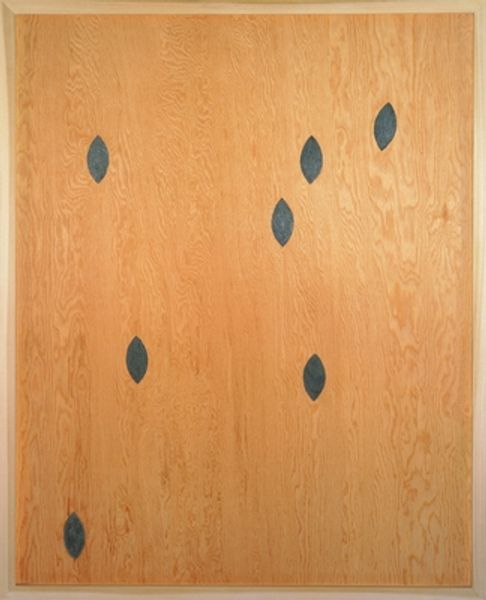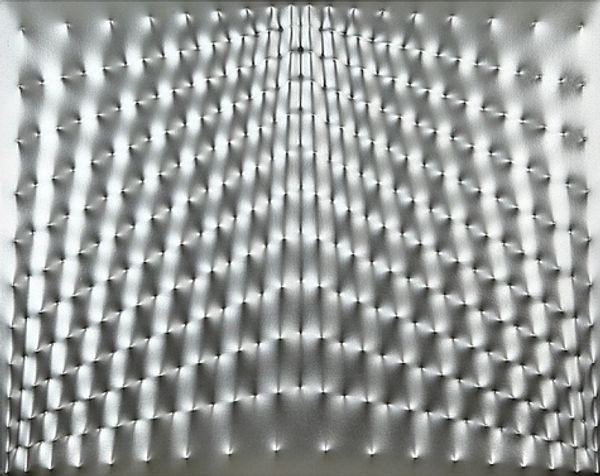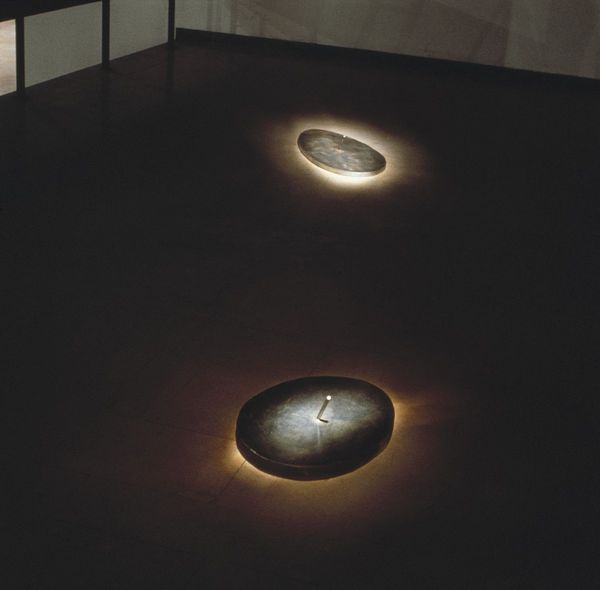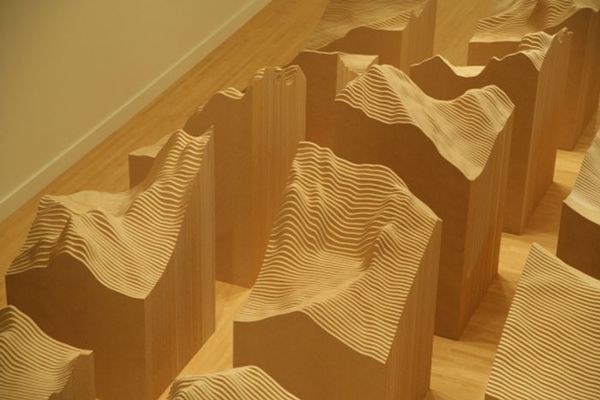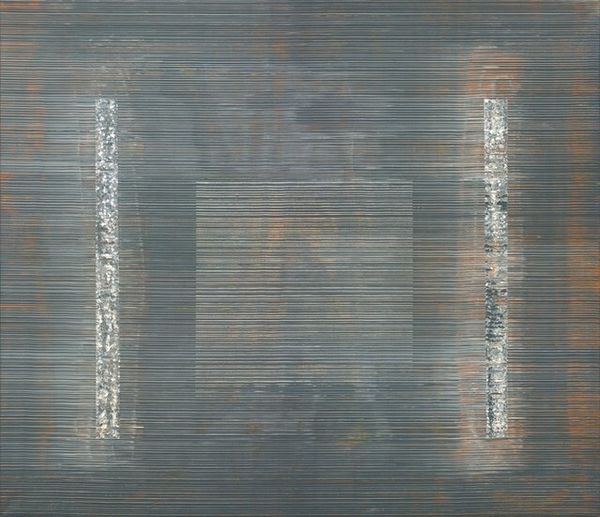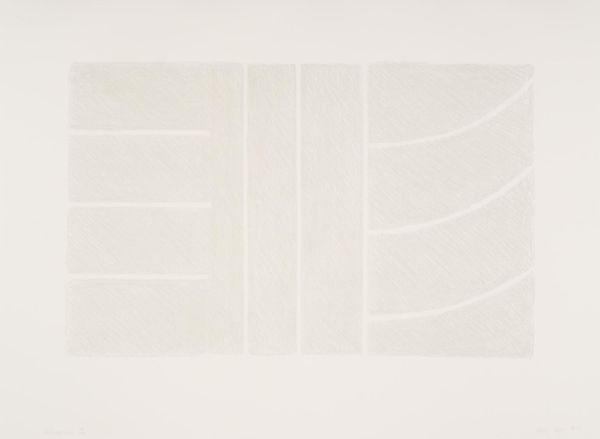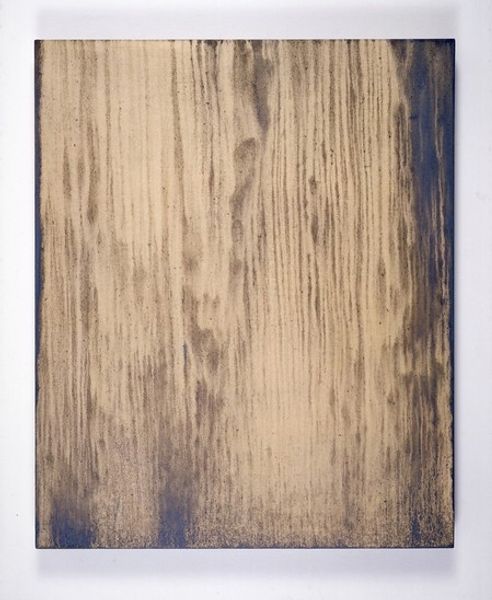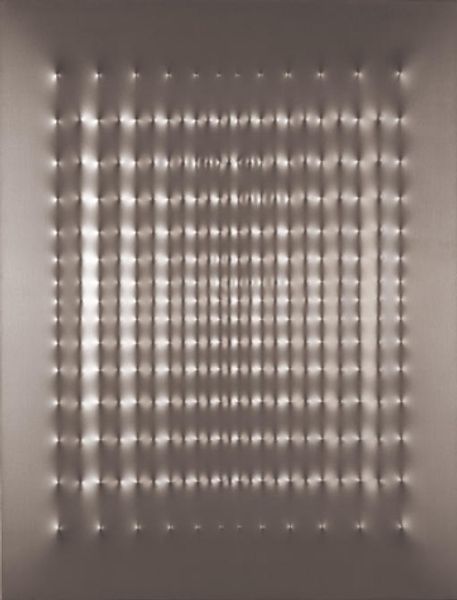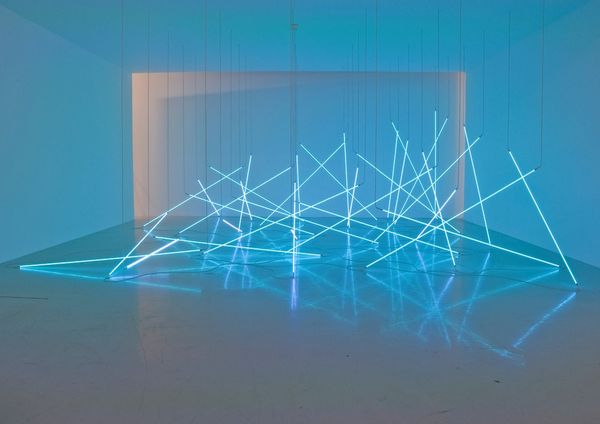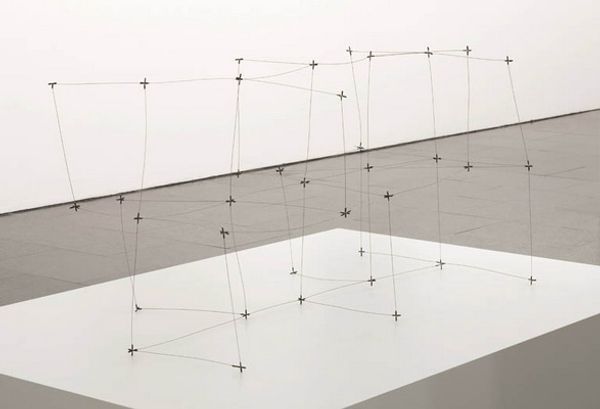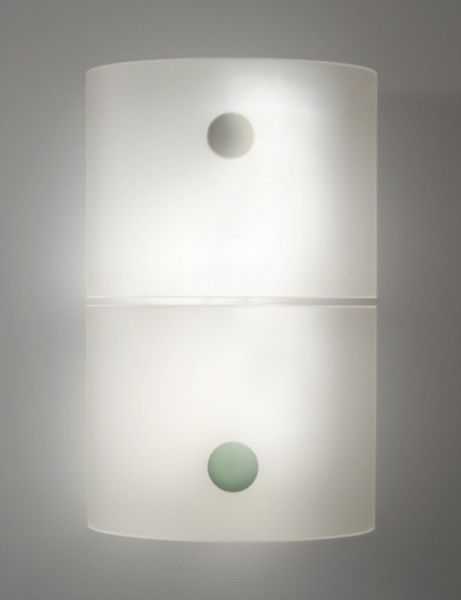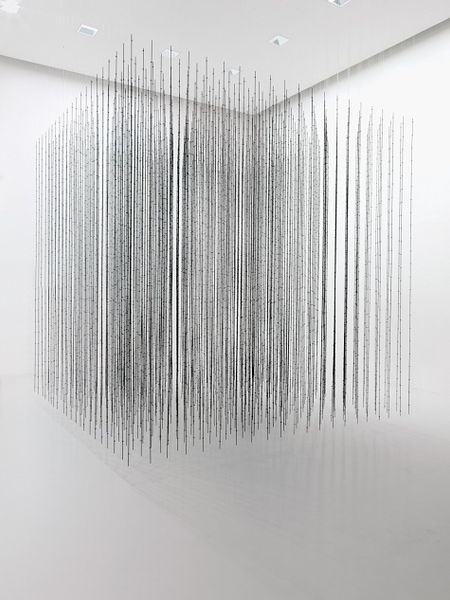
Copyright: Zahrah Al-Ghamdi,Fair Use
Curator: This is Zahrah Al-Ghamdi's "Glimpse of the Past," created in 2011. It’s a site-specific installation piece that utilizes found objects and explores conceptual and ephemeral art forms. My first impression is of something fragile and temporary. What strikes you? Editor: The ethereal quality is immediately apparent. The delicate circular forms spread across the wooden floor evoke a sense of transient memory, something almost dreamlike, but it also calls for historical insight. How does the site itself contribute? Curator: Al-Ghamdi’s choice of the existing architecture is key. The artwork interacts with its immediate surroundings, highlighting its presence but also underlining its impermanence. As ephemeral art, its impact resides in its temporality. Editor: I’m curious, what narratives are embedded in such abstractions? Does it reflect specific memories? Curator: That’s what's interesting about abstract forms; they encourage broader interpretations, linking to shared human experience. With Glimpse of the Past, one can speculate that these circles symbolize fading or blurred traces of memories, or even the cycles of history. Editor: But aren't all histories constructed narratives, with certain voices highlighted over others? An artwork in such a context pushes for further meaning! Curator: Precisely, and Al-Ghamdi works beautifully within these frameworks. She understands that history isn't just something we inherit; we actively create, question, and redefine its meaning in the present. This installation serves as a canvas on which people impose their understanding of these meanings. Editor: A powerful reminder that the "past" is always present, shaped by our contemporary lens. I'm particularly intrigued by her utilization of matter-painting and how its techniques can be interpreted and challenged over time. Curator: It’s a subtle dialogue, using fragile and shifting materials to discuss robust, even entrenched social narratives. It speaks of history but invites its remaking, its retelling, the acknowledgment of perspectives previously absent. Editor: What strikes me the most is how "Glimpse of the Past" captures both the fragility of memory and our relentless human tendency to reconstruct it continuously through various contemporary forces, ideas and historical contexts. Thank you. Curator: And thank you! I was fascinated to consider how conceptual works challenge us to see, but also how they remind us to interrogate the gaze that we are employing, and what stories, through a historic or social lens, we are hoping to tell.
Comments
No comments
Be the first to comment and join the conversation on the ultimate creative platform.
